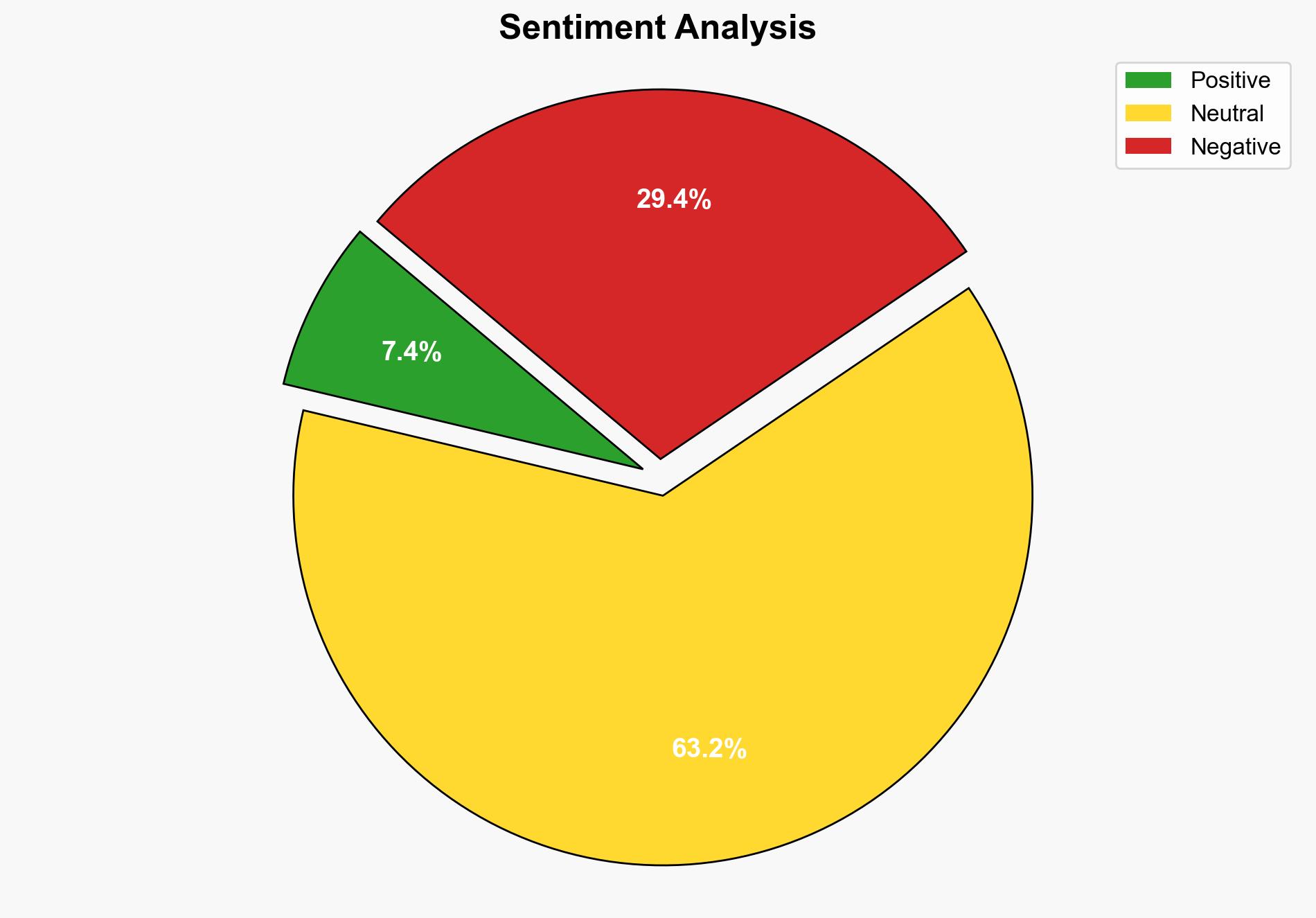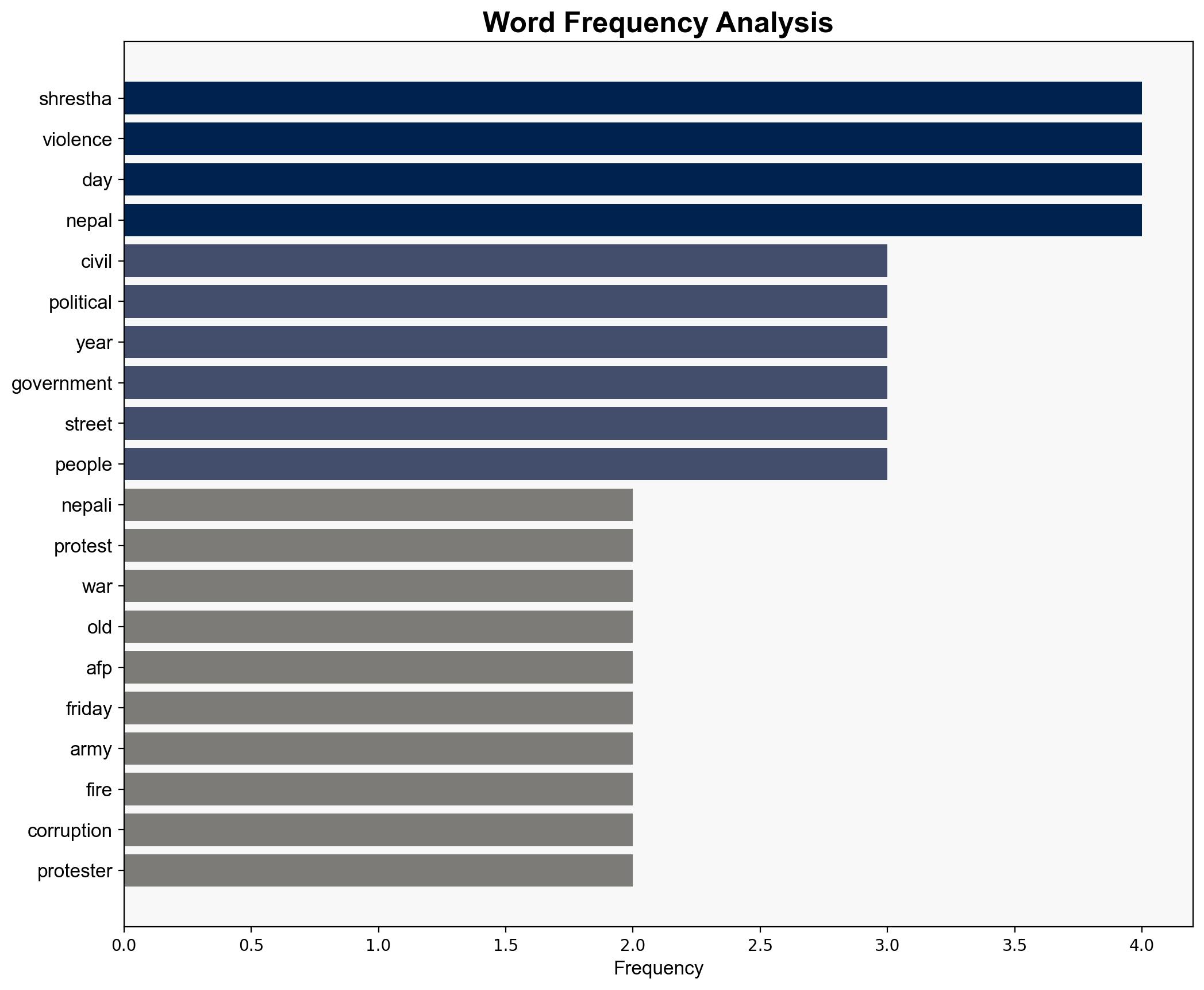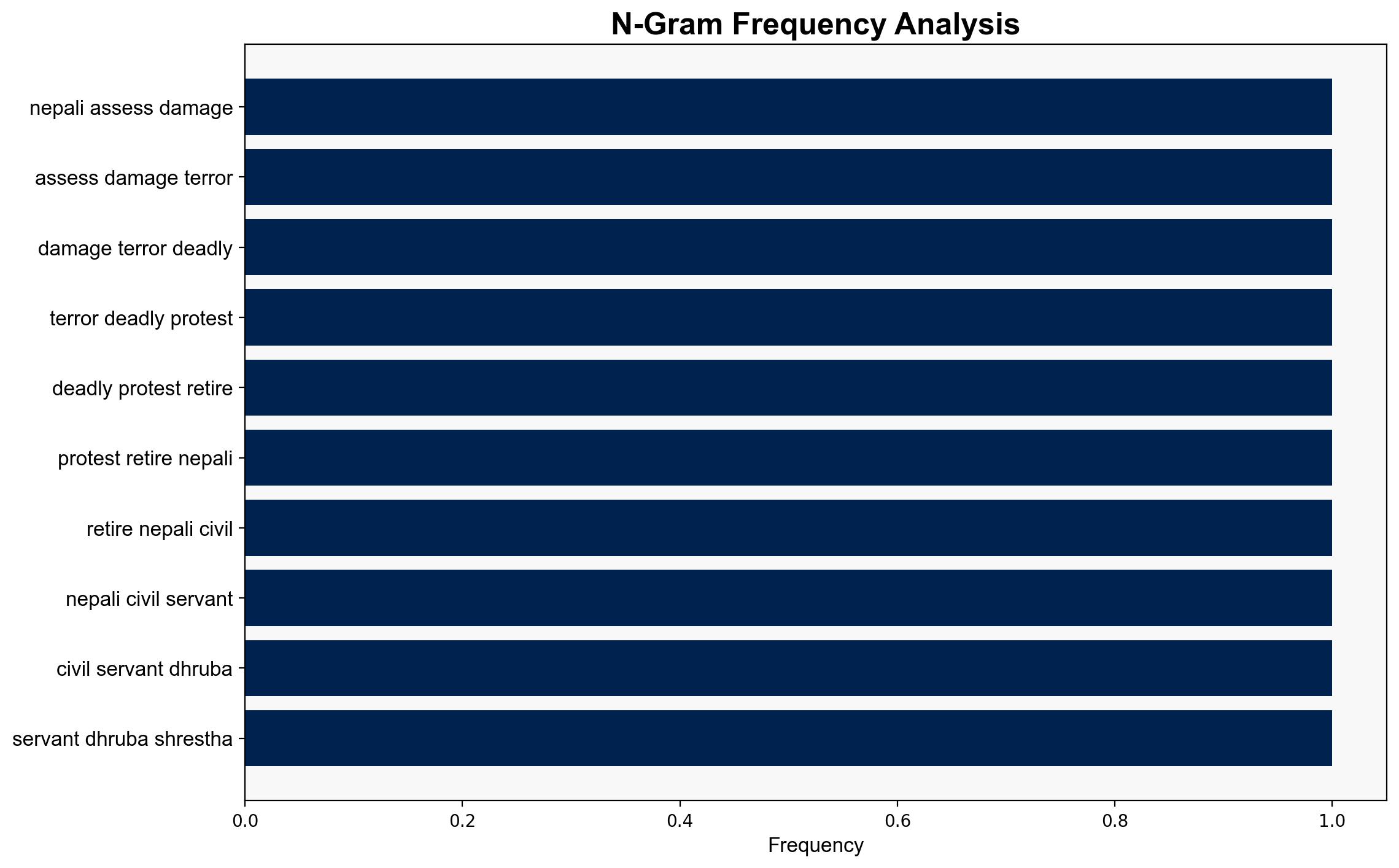Nepalis Assess Damage After Terror Of Deadly Protests – International Business Times
Published on: 2025-09-12
Intelligence Report: Nepalis Assess Damage After Terror Of Deadly Protests – International Business Times
1. BLUF (Bottom Line Up Front)
The situation in Nepal is characterized by significant unrest driven by anti-corruption protests, leading to widespread violence and political instability. The most supported hypothesis suggests that the protests are primarily fueled by economic hardship and political disillusionment, with a medium confidence level. It is recommended to monitor the situation closely and engage in diplomatic efforts to support political dialogue and stability.
2. Competing Hypotheses
Hypothesis 1: The protests are primarily driven by economic hardship and dissatisfaction with the government’s handling of corruption, exacerbated by high informal employment rates and economic instability.
Hypothesis 2: The protests are orchestrated by rival political factions seeking to exploit public discontent to destabilize the current government and gain power.
Using the Analysis of Competing Hypotheses (ACH) 2.0, Hypothesis 1 is better supported by the evidence of widespread economic hardship and the focus on anti-corruption demands. Hypothesis 2 lacks direct evidence of political orchestration, although it remains plausible given the political vacuum and factional disagreements.
3. Key Assumptions and Red Flags
– Assumption: Economic hardship is a primary driver of unrest, assuming no external manipulation.
– Red Flag: Lack of direct evidence linking political factions to protest organization.
– Cognitive Bias: Confirmation bias may lead to overemphasizing economic factors without considering political manipulation.
4. Implications and Strategic Risks
The unrest poses risks of further violence and political instability, potentially leading to a power vacuum or authoritarian measures. Economic disruptions could exacerbate poverty and unemployment, fueling further protests. There is also a risk of regional spillover if instability persists.
5. Recommendations and Outlook
- Engage in diplomatic efforts to encourage dialogue between political factions and support the establishment of an interim government.
- Monitor economic indicators and provide international aid to alleviate economic hardship.
- Scenario Projections:
- Best Case: Successful political dialogue leads to stabilization and economic recovery.
- Worst Case: Escalation of violence and political fragmentation, leading to prolonged instability.
- Most Likely: Continued unrest with intermittent violence, requiring sustained international attention.
6. Key Individuals and Entities
– Dhruba Shrestha: Retired civil servant providing local perspective.
– Sushila Karki: Leading candidate for interim leadership.
– Anup Thapa: Construction worker highlighting economic struggles.
– Achyut Thapaliya: Witness to protest destruction, emphasizing anti-corruption sentiment.
7. Thematic Tags
national security threats, economic instability, political unrest, regional focus





